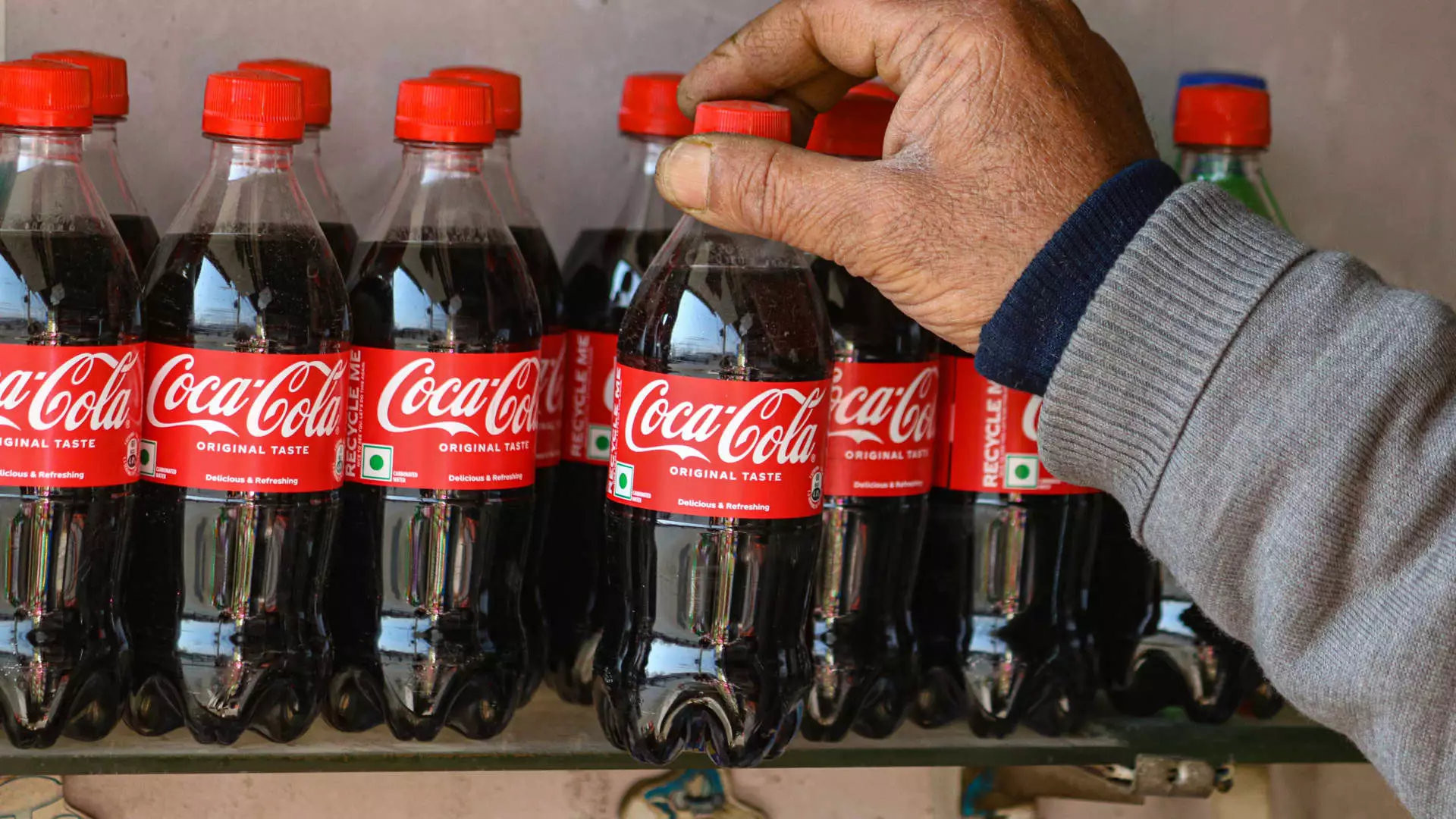Coca-Cola, one of the world’s premier beverage companies, is poised to adapt its packaging strategy in light of recent tariffs imposed on aluminum imports by President Donald Trump. This shift, as articulated by CEO James Quincey, emphasizes a significant transition from aluminum to plastic bottles. As companies navigate the complexities of global economic dynamics, Coca-Cola’s decision underscores the tension between maintaining affordability for consumers and adhering to sustainability commitments.
In a move largely viewed as targeting Chinese imports, the Trump administration raised tariffs on aluminum and steel from 10% to a striking 25%. While the intent of these tariffs may seem straightforward, the resulting implications for companies reliant on these materials are complex. Quincey acknowledged that Coca-Cola does procure some of its aluminum from Canada; however, he reassured investors and consumers alike that the company can mitigate any financial repercussions.
It’s essential to recognize that while the tariff increase is not negligible, it is unlikely to disrupt a multi-billion dollar operation substantially. This perspective is critical, especially when considering how large corporations must balance the immediate impact of such tariffs with long-term strategic planning.
Aluminum has been a favored option for many beverage companies, including Coca-Cola, due to its recyclability—approximately 50.4% of aluminum cans were recycled in the U.S. as of 2018. In contrast, the recycling rate for PET (polyethylene terephthalate), the primary material for plastic bottles, was disappointingly lower at 29.1%. This discrepancy raises pertinent questions about sustainability.
Quincey’s remarks highlight how an increase in aluminum pricing might compel a more considerable pivot toward PET bottles. While these bottles are lightweight and have the potential for recycling, the reality is that the domestic recycling infrastructure often lags behind that of aluminum. This shift may not only be seen as a means to address economic pressures but also as a potential setback in Coca-Cola’s longstanding sustainability narrative.
In an era where consumers are increasingly eco-conscious, Coca-Cola’s brand image takes on added scrutiny. The company has experienced ongoing criticism, particularly from environmental groups such as Greenpeace, for its significant contribution to plastic pollution. For six consecutive years, Coca-Cola was dubbed the world’s worst polluter due to its extensive use of single-use plastics.
The decision to pivot toward more plastic packaging amid heightened tariffs could become a double-edged sword. On the one hand, it allows Coca-Cola to maintain competitive pricing; on the other, it could tarnish its image among environmentally-aware consumers. The company’s recent adjustment in sustainability goals—from a target of using 50% recycled material by 2030 to a more modest aim of 35% to 40% by 2035—further complicates this narrative. It hints at a retreat from more ambitious environmental commitments during a critical time for ecological awareness.
As Coca-Cola navigates these turbulent waters of tariffs and sustainable practices, it becomes apparent that the company’s roadmap is fraught with challenges. The transition from aluminum to plastic can be seen as both a response to immediate economic pressures and a potential compromise on environmental integrity.
In the coming years, the actions of Coca-Cola will serve as a crucial case study in balancing consumer demands for affordability with the pressing need to act responsibly towards the environment. How Coca-Cola chooses to manage its packaging strategy—in light of tariffs, environmental responsibilities, and market demands—will not only shape its financial outcomes but also its reputation as a leader in sustainable practices. Ultimately, the effectiveness of this strategic pivot will be measured not only in financial terms but also in its ability to regain the trust and loyalty of an increasingly eco-conscious consumer base.


Leave a Reply